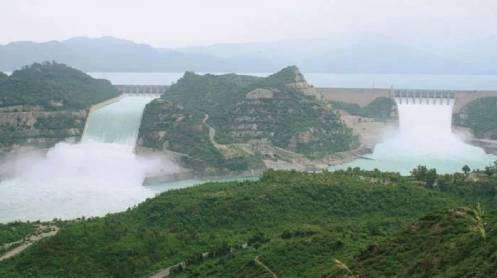ISLAMABAD, October 8, 2025 — The Indus River System Authority (IRSA) has unanimously rejected a proposal by the Water and Power Development Authority (WAPDA) to release nearly half of Tarbela Dam’s water storage within a month and to extend deadlines for two delayed tunnel projects — a move the regulator said could jeopardize water security for the upcoming Rabi season.
At a meeting of the IRSA Advisory Committee (IAC) on Tuesday, chaired by Sahibzada Muhammad Shabbir, the authority expressed strong dissatisfaction with WAPDA’s prolonged delays in completing Tunnel-5 (T5) and Tunnel-4 Low Level Outlet (T4 LLO). Members agreed to escalate the matter to the Ministry of Water Resources and the Prime Minister’s Office for urgent intervention.
According to meeting sources, WAPDA proposed lowering Tarbela’s water level from its current 1,550 feet to 1,495 feet by November 10, alongside requests for an eight-month extension for one tunnel and a one-year extension for the other. Both project deadlines have already lapsed — by about 33 months and three years, respectively.
Representatives from Sindh and Punjab opposed the plan, warning that releasing 2.8 million acre-feet (MAF) of water into the sea without irrigation demand would harm agriculture and reduce carryover storage for the next Kharif 2026 season. They cautioned that Pakistan’s food production “cannot be held hostage to WAPDA’s project delays.”
Committee members criticized the agency for repeated postponements, noting that T4 and T5 should have been completed years ago. Some even suggested considering the abandonment of the two tunnels if WAPDA could not guarantee completion.
WAPDA officials, however, stopped short of committing to the proposed timelines, despite already being four to 36 months behind schedule. IRSA made clear that water allocations could no longer be reduced to accommodate construction needs.
The regulator highlighted that Pakistan is entering the Rabi season with nearly full reservoirs — the first time in a decade — and pledged to maintain a healthy carryover into early Kharif. The committee approved anticipated rim-station inflows of 22.016 MAF and endorsed an overall system shortage of only 8%, the lowest in 33 years and well below the post-1993 average of 18%.
Under the approved Rabi allocations, Punjab will receive 18.207 MAF, Sindh 13.734 MAF, Khyber Pakhtunkhwa 0.701 MAF, and Balochistan 1.171 MAF — all above their 10-year averages.
Reviewing Kharif 2025, IRSA reported total inflows of 122.364 MAF, exceeding projections by 18% and last year’s levels by 14%, largely due to heavy monsoon rains and floods. As of September 30, reservoirs stood at 99% capacity (13.214 MAF) — an exceptional level of storage heading into winter.
The IAC will reconvene in December to reassess water availability. Under the 1991 Water Apportionment Accord, IRSA sets water distribution for provinces twice annually — for Kharif (April–September) and Rabi (October–March) — with wheat as the principal Rabi crop, alongside gram, lentil, barley, tobacco, rapeseed, and mustard.
IRSA officials stressed that maintaining optimal storage levels at Tarbela is critical to ensuring stable irrigation supplies and national food security amid increasing climate variability.
Story by Khaleeq Kiani







